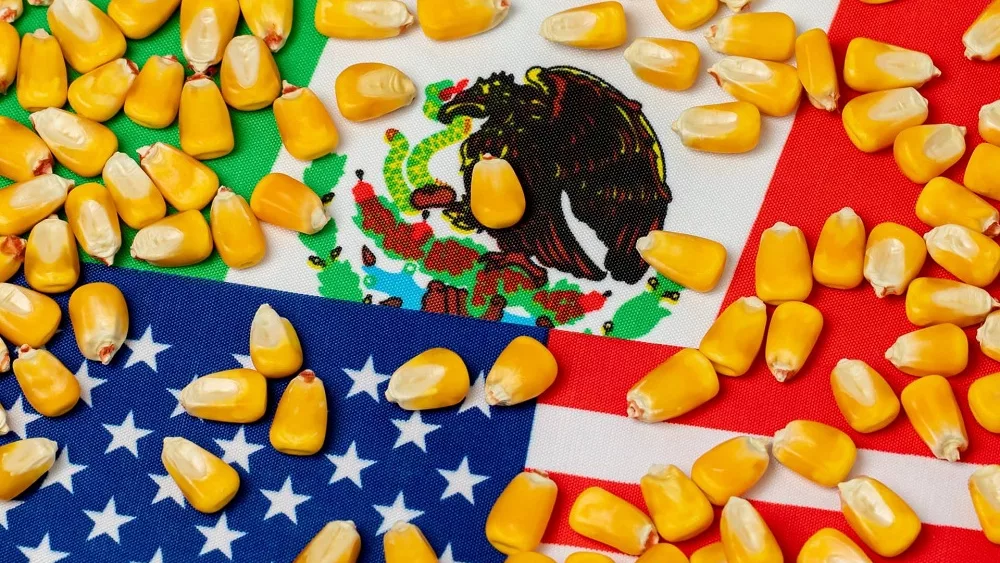For the last 13 months, most of the news coming out of China regarding the U.S. grain trade has been one of frustration and uncertainty, putting a damper on commodity prices that have already tumbled from historic highs. In mid-November 2013, China began rejecting shipments of U.S. corn and corn byproducts after finding the presence of Syngenta’s Agrisure Viptera (MIR 162) seed trait mixed in shipments. The trait is approved in the U.S. and a number of other countries and Syngenta first submitted MIR 162 to the Chinese for regulatory review in 2010. But for the last four years, the company could not get a final answer on approval out of the Chinese government.
In the meantime, a study by the National Grain and Feed Association (NGFA) estimated that U.S. exporters and farmers lost up to $2.9 billion because of the uncertain trade environment. And as a result of the trade disruptions U.S. companies, including Cargill and Archer Daniels Midland, along with dozens of farmers, filed dozens of lawsuits over the damages to the industry. But now, the tide seems to be turning and for many, it can’t happen fast enough.
China is the United States largest export market with $25.9 billion of exports in FY14, up 11 percent from the previous year and doubling in the past five. China is also the largest international market for U.S. food and agricultural products, accounting for 20 percent of all U.S. farm exports. Similarly, Chinese agricultural exports to the United States have increased exponentially, growing over 50 percent in the last 5 years, according to USDA.
In advance of the 25th session of the U.S.-China Joint Commission on Commerce and Trade (JCCT) meeting in Chicago last week – which included Agriculture Secretary Tom Vilsack, U.S. Secretary of Commerce Penny Pritzker, U.S. Trade Representative Michael Froman, a Chinese delegation led by Vice Premier Wang Yang, and dozens of others – there seemed to be an increased willingness to drop some of the long-standing roadblocks and increase cooperation.
China made commitments that should promote significant increases in U.S. exports of soybeans, corn and dairy products to Asian consumers. Specifically, China announced that it would approve the importation of new biotechnology varieties, including Syngenta’s Viptera corn and biotech soybeans developed by Dupont Pioneer and Bayer CropScience.
Current annual U.S. exports of soybeans and corn to China total $14 billion and $3.5 billion, respectively, according to a document released by the U.S. Trade Representative’ office.
In addition, the Chinese delegation said they “would pursue a regular dialogue with the United States focused on the benefits of the increased use of innovative technologies in agriculture,” according to a joint statement. China also agreed to strong Intellectual Property protections for products that use trademarks or common names like “parmesan” or “feta” cheese, which USTR says “have begun to demonstrate a potential for rapid export growth vis-à-vis China.”
Skeptics – especially those suffering from the market uncertainty in recent years – expressed concern that the outcomes promised in this most recent JCCT meeting could still be years in the making, if ever realized. But USTR’s Froman was very upbeat about the potential.
“By these measures, and particularly in the areas of market access, intellectual property rights protection, innovation policies, and competition law enforcement, this year’s JCCT has been a success,” noted U.S. Trade Representative Michael Froman.
“From the very start, when China informed on Tuesday of their pending approvals for three U.S. produced seeds, to our meetings today when we secured commitments to open markets for our exports and level the playing field for American workers and firms, we have worked to deliver concrete results that support economic growth in every corner of our country,” he added.
For more on how the Chinese first signaled biotech approvals, click here.
Moving forward, JCCT participants agreed to establish a high-level strategic dialogue on agricultural innovation. In time, business and industry leaders hope this discussion can lead to more predictability for farmers and agribusinesses trading with China and vice versa.
“The vice-ministerial-level Strategic Agricultural Innovation Dialogue that we agreed to will begin early next year with multiple Chinese ministries,” said Secretary Vilsack. “These discussions will showcase U.S. innovation and create new economic opportunities in a wide range of agricultural industries, while addressing food security, climate change and environmental protection.”
Vilsack pointed out that, “it’s in the Chinese self-interest to create a regulatory system that’s synchronized with our system and with Brazil’s system and other countries that are creating and encouraging these traits because it will make their producers more productive.”
Looking at the long-term picture, Vilsack said he expects that the “interdependence of the United States and China will only increase.
“Our two countries continue to grow more prosperous and demand for high quality agricultural and food products continues to rise. What the United States grows affects what is eaten in China. What China chooses to grow affects the food available in the United States,” Vilsack noted.
The Biotechnology Industry Organization (BIO) applauded the establishment of the vice-ministerial Strategic Agricultural Innovation Dialogue as well as reports that China is moving forward on long-delayed biotech products.
“This development is an encouraging first step in building a 21st century U.S.-China relationship on agricultural biotechnology and trade,” said BIO President and CEO Jim Greenwood. “The biotechnology industry looks forward to working with leaders within the United States and Chinese governments to structure a framework that will ensure agricultural trade can be facilitated.”
Source: Agri Pulse




